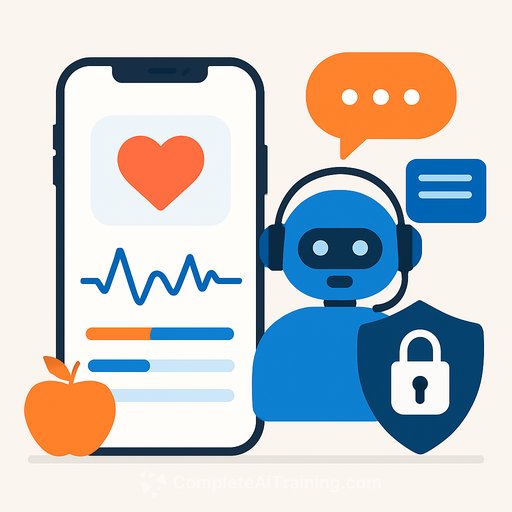PAHO Releases Guide to Design AI Instructions for Public Health
Clear instructions make AI useful. In public health, they also make it safe. PAHO's new guide puts structure around how to write AI instructions that support clinicians, managers, and analysts without risking patient safety or data privacy.
If you work in healthcare, think of this as a playbook for getting reliable outputs from AI on real tasks-surveillance summaries, patient education drafts, policy briefs, or logistics planning.
What the guide focuses on
- Safety first: keep clinical decisions under human oversight; document use cases and off-limits scenarios.
- Clarity: state role, goal, scope, and the exact output format you want.
- Context: provide definitions, data sources, geography, and time windows.
- Privacy: exclude identifiers unless you're in a secure, approved environment with de-identified data.
- Bias checks: request subgroup analysis and flag uncertainty explicitly.
- Auditability: version prompts, log outputs, and record who approved what.
- Evaluation: compare results against baselines and codify pass/fail criteria.
A simple instruction framework
- Role: "You are a public health analyst for [region]."
- Goal: "Summarize weekly respiratory illness trends for briefing."
- Context: "Data from [source], weeks [X-Y], population [group]."
- Constraints: "No clinical diagnosis; cite data; avoid PHI."
- Process: "1) Clean anomalies 2) Compare to 4-week average 3) Note outliers."
- Output format: "3 bullets, one chart description, one risks/limitations section."
- Quality checks: "If data is missing, say so and stop."
Ready-to-use prompt templates
- Surveillance brief: "You are an epidemiology analyst. Using de-identified weekly ILI counts for [region] from [dates], create a 150-word briefing with trend direction, % change vs last 4 weeks, and two hypotheses for observed shifts. Include a limitations line if data coverage is below 85%."
- Patient education draft: "You are a health educator. Write a 6th-grade reading-level handout on [topic], in English and Spanish. Use short sentences, plain language, and a 3-step self-care section. Add a 'Talk to your clinician if…' box with three concrete triggers."
- Outbreak triage summary: "You are a public health responder. Summarize incident reports for [pathogen] from [source] between [dates]. List top 3 affected areas, probable transmission routes, and immediate non-pharmaceutical actions. Do not recommend treatment. Flag any missing data."
- Supply planning note: "You are a clinic operations planner. Based on last month's visit volumes and stock logs (CSV summary below), estimate the next 4 weeks of PPE needs. Output a table: item, current stock, projected use, reorder point, gap. State assumptions."
Risk controls you should embed
- Keep identifiable data out of prompts unless your environment is approved for PHI and encrypted end-to-end.
- Force uncertainty statements: "If confidence is low, say why and request specific data."
- Set stop conditions: "If this requires clinical judgment, stop and ask for human review."
- Bias guardrails: require results by subgroup (age, sex, region) and flag disparities.
- Traceability: include prompt version, data snapshot date, and reviewer initials in every output.
Implementation checklist for teams
- Pick high-volume, low-risk tasks first (briefings, drafts, summaries).
- Write a one-page use policy: approved tasks, banned tasks, review steps.
- Create shared prompt templates with version numbers and owners.
- Run a pilot with 20-50 samples; compare against human-only baselines.
- Measure accuracy, time saved, error severity, and user satisfaction.
- Set an incident channel and rollback plan for bad outputs.
- Train staff and refresh prompts monthly based on feedback and drift.
Quality metrics that matter
- Accuracy vs verified reference (predefined checklist).
- Timeliness (minutes from data pull to draft).
- Error severity count (none, minor edit, major correction).
- Bias indicators (performance parity across subgroups).
- Cost per completed task vs human-only baseline.
Governance essentials
- Approval gates: clinical vs non-clinical tasks; second reader for anything public-facing.
- Data hygiene: de-identification, minimum necessary data, retention rules.
- Model access: who can use which tool, where logs are stored, how to revoke access.
- Documentation: keep a prompt library, change log, and decision register.
Where to learn more
See broader guidance on ethics and safety in health AI from WHO. It pairs well with PAHO's focus on practical instruction design.
Build your team's AI instruction skills
If you want structured practice and templates for healthcare and public health tasks, explore these resources:
Bottom line: clear, safe instructions are the difference between helpful AI and headache-inducing output. Start small, write like a checklist, and keep humans in the loop.
Your membership also unlocks:






